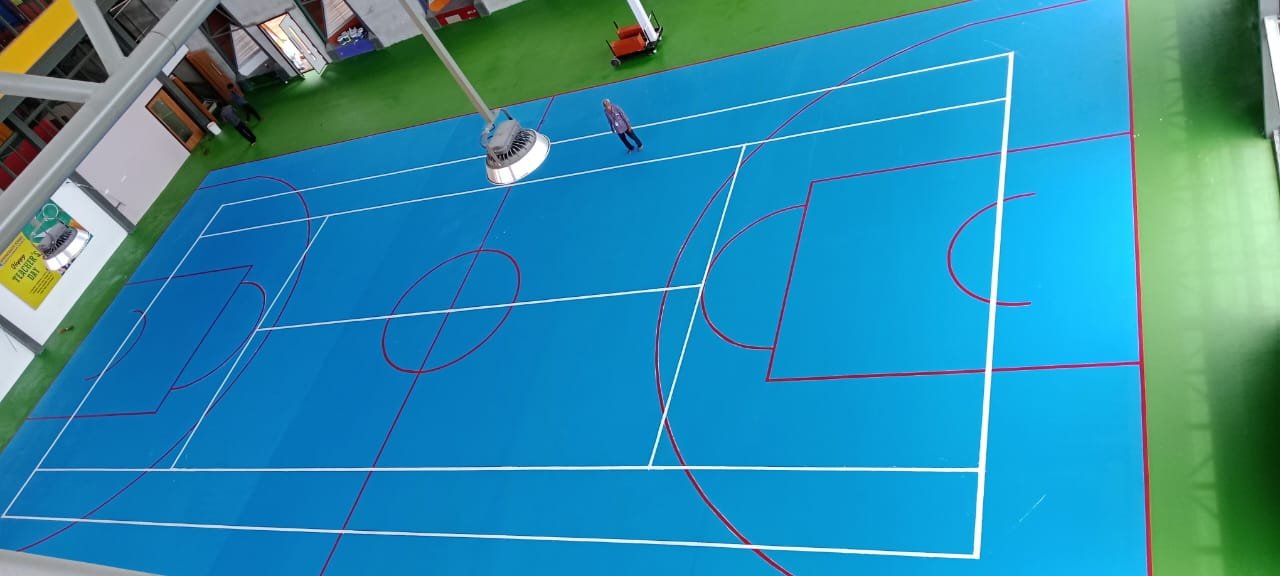INDOOR AND OUTDOOR SPORTS FLOORING
SYNOPSIS
ü INTRODUCTION
ü TYPES OF INDOOR
SPORTS FLOORING
ü TYPES OF OUTDOOR
SPORTS FLOORING
ü CONCLUSION
INTRODUCTION
Indoor and outdoor
sports flooring differ significantly due to the varying environmental
conditions they face and the specific requirements of different sports. Indoor
sports flooring options are designed to cater to various sports specific needs
while providing durability, safety, and performance. Outdoor sports flooring
needs to withstand various weather conditions while providing durability,
safety, and suitable playing characteristics.
TYPES OF INDOOR SPORTS FLOORING
v Hardwood
Flooring: Typically made from
maple wood, hardwood flooring is common in basketball courts and indoor
volleyball. It offers excellent shock absorption, ball bounce, and a sturdy
surface for competitive play.
v Synthetic
Flooring: There are various
types of synthetic flooring materials used indoors, such as:
·
Polyurethane-based Flooring: Offers shock absorption, durability, and
resilience. It’s suitable for various indoor sports like basketball,
volleyball, and badminton.
·
PVC/Vinyl Flooring: Provides cushioning and shock absorption. It’s
versatile and can accommodate different sporting activities, including dance,
aerobics, and multi-purpose gym spaces.
·
Rubber Flooring:
Known for its durability and resilience, rubber flooring is suitable for
gymnasiums, fitness centers, and weightlifting areas. It offers impact
resistance and helps prevent injuries.
v Carpeted
Surfaces: Some indoor sports,
such as indoor soccer or gymnastics, utilize carpeted surfaces. These carpets
offer some cushioning and traction for specific activities.
TYPES OF OUTDOOR SPORTS FLOORING
v Acrylic Sports
Surfaces: Often used for outdoor
tennis and basketball courts, acrylic surfaces offer excellent durability,
weather resistance, and consistent ball bounce. They are easy to maintain and
can endure different climates.
v Rubber Sports
Tiles/Pavers: Rubber tiles or pavers
are resilient, shock-absorbent, and provide good traction. They are commonly
used in outdoor areas such as playgrounds, running tracks, and outdoor fitness
areas due to their durability and weather resistance.
v Artificial Turf: Synthetic grass surfaces are widely used for
outdoor sports like soccer, rugby, field hockey, and lacrosse. Modern
artificial turfs mimic natural grass, providing a consistent playing surface,
durability, and low maintenance.
v Interlocking
Plastic Tiles: These tiles are
versatile and often used for outdoor sports like basketball, inline hockey, and
tennis. They are easy to install, offer good shock absorption, and can endure
different weather conditions.
v Concrete or
Asphalt: While not as
specialized as other options, concrete or asphalt surfaces are commonly used
for various outdoor sports, especially in community or recreational spaces.
They can be painted or coated to accommodate specific sports.
CONCLUSION
The
choice of flooring often depends on the type of sport being played, the level
of play, budget, and facility requirements. Key
considerations for both types of flooring include shock absorption, slip
resistance, durability, ease of maintenance, and suitability for the specific
sport’s requirements. Additionally, outdoor flooring needs to withstand weather
elements like rain, sun exposure, and temperature fluctuations, which indoor
flooring doesn’t typically encounter.
